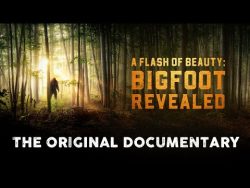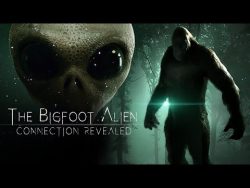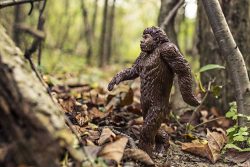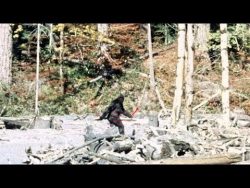Unveiling Bigfoot: Natural and Supernatural Theories
In the realm of cryptozoology, few enigmas elicit as much fascination and debate as the legendary figure known as Bigfoot. Is it a flesh-and-blood creature, an elusive unknown primate lurking in the wilderness, or does its existence hint at something more mystical and supernatural?
Advocates of the “Unknown Primate” theory point to a wealth of anecdotal evidence, footprint casts, and alleged sightings spanning decades. They argue that the dense, remote forests offer suitable habitats for an undiscovered ape-like species.
Proponents cite the Patterson-Gimlin film, a grainy yet iconic footage captured in 1967, as compelling visual evidence supporting the existence of a large, bipedal creature.
Conversely, proponents of the “Supernatural Origin” theory propose a different perspective. They posit that Bigfoot belongs to the realm of the supernatural, attributing its presence to folklore, cultural myths, and spiritual beliefs embedded within various indigenous cultures.
Some even suggest that Bigfoot may transcend conventional biology, existing as an interdimensional or spiritual entity rather than a corporeal being.
Bridging the Bigfoot Divide
The divide between these perspectives remains as wide as the forests that Bigfoot purportedly roams. Those supporting the supernatural origin theory highlight peculiar aspects of encounters, including reports of vanishing tracks, inexplicable disappearances, and an apparent ability to evade capture or detection despite advancements in technology.
Nevertheless, skeptics of both theories emphasize the lack of conclusive physical evidence, despite extensive expeditions, DNA analyses of purported Bigfoot samples, and modern surveillance techniques. The absence of verifiable remains or clear, indisputable footage continues to fuel skepticism.
Researchers on both sides strive for validation. Proponents of the unknown primate theory explore remote areas, seeking biological evidence—hair samples, scat, or even remains—that could confirm Bigfoot’s existence within the known taxonomy of life.
Meanwhile, advocates of the supernatural origin delve into cultural anthropology, delving deeper into indigenous folklore and spiritual beliefs to glean insights into the enigmatic being’s potential existence.
Somewhere in the Middle?
Perhaps the truth lies in the convergence of these theories. Could Bigfoot be a product of both natural biology and the mystique of folklore, blurring the lines between the tangible and the metaphysical?
Could it represent an unknown species that has, over time, woven itself into the tapestry of human imagination and spirituality?
Until irrefutable evidence surfaces, the mystery of Bigfoot remains a captivating enigma, drawing adventurers, scientists, and enthusiasts alike into the heart of the debate. The quest to unravel its existence serves not only as a pursuit of the unknown but also as a testament to the enduring allure of the unexplained in our world.
As the search continues, whether for an elusive primate or an otherworldly entity, the enigma of Bigfoot continues to roam the vast landscapes of human curiosity, prompting us to explore the boundaries between reality and legend.



























